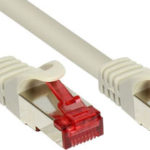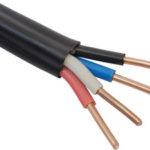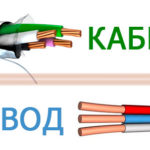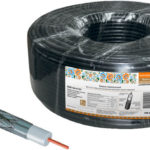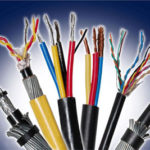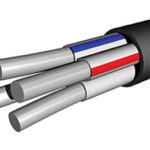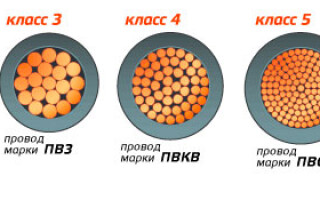Single-core and stranded wire has its own structure, purpose and scope of application. Requirements have been developed for each type and nominal parameters have been established. The difference between single-core and multicore cable is the physical properties, the method of installation and operation.
Contents
Flexibility class
To characterize single and stranded wire, it is necessary to understand their technical characteristics. The design parameters are regulated by regulatory documents. The established state standard GOST 22483-2012 defines the parameters that allow classifying them by type and discharge.
When characterizing cable resistance to deformation, the parameter of flexibility is used. Flexibility classes are distinguished on the basis of the parameters. The trunks used in industrial production belong to the 1st class.

The second class is characterized by greater flexibility, to achieve which several wires are used. For classes 3, 4, 5 and 6, the criterion is the number of threads and their diameter. The state standard specifies the maximum diameter for each of them.
Wire grade PV-1 refers to class 1. It has a single conductive fiber covered with a layer of insulating material. Cable brand KOG is a particularly flexible wire, belongs to class 6, it consists of thin strands.
To understand the difference between single-core and stranded cable, you can consider the technical parameters on the example of materials with a cross section of 1 mm² of Class 3 and Class 5. Class 3 wire consists of a set number of fibers with a diameter not exceeding the norm.
For 5 - this figure is 0.21 mm, respectively, it will contain more individual metal filaments. Their number must be higher than 7 and different from that of Class 2.
Fibers are made of materials that conduct current and heat. Material with a nominal cross section of up to 1 mm² does not use aluminum. Annealed copper fibers with and without metal coating are used in all grades of communications materials.
Aluminum cables, which have a cross section of 16 mm² and larger, are also characterized by flexibility, they can use several fibers.
Single-core cable
Materials for laying communications with one monolithic metal fiber refer to the installation type; they are installed permanently without the subsequent possibility of movement. The cable has high rigidity, when using it wiring in the shield looks aesthetically pleasing and provides ease of maintenance of automatics.
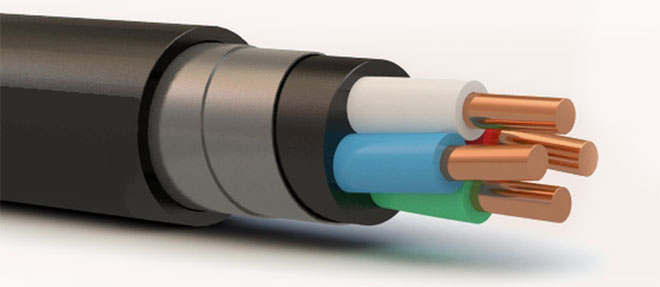
The advantage of single-core cable is its low price. As a current-carrying element, it has one conductor with a cross-section of the set diameter standards. It is designed for installation of concealed wiring in the wall.
Single-core cable is used to connect switches and sockets. A twist of several fibers can be easily crimped with terminals or welded. With large cross-sections, cable with 1 fiber has a higher mechanical strength. Difficult is the laying of rigid material in a plastic box.
Multicore cable
In this type of material for laying communications conductive element consists of several fibers intertwined with each other. The established standards allow the interlacing of non-conducting threads of kapron to increase elasticity.
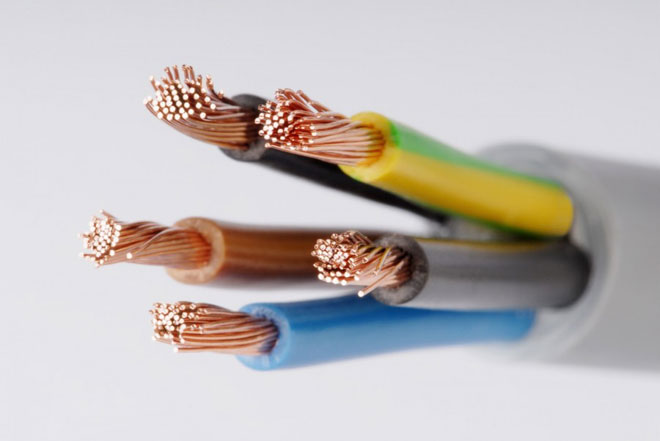
To determine which cord to use: soft or hard, it is important to pay attention to the rate of flexibility and the permissible bending radius. This material is easy to install, it can be moved when necessary.
Flexible wire (cord) can be used for portable installations. The installation of stranded wires allows the use of brass terminals for switching without the use of additional tools.
The lugs are used to connect to the screw terminals after pressing. The use of these fastener parts negates the advantages of solid wire for these types of connections.
Multicore cable is practical to use when installing a temporary electrical installation. This type of communication material is easier to lay in a box, which saves time during installation.
In sound or signal cables, there is a displacement of electric current to the surface of the conductors. This means that the current density is lower in the middle of the cross section. The advantage of wires with more fibers is that they solve the skin effect problem, heat less and reduce shipping losses.
Scope of application
Each type of wire has its own purpose, and the properties allow you to determine which wire is better: multi-wire or single-wire with one fiber. Stationary wiring of power cables in dwellings, industrial facilities is installed using conductors with a single wire.
On electrified railroads communications are laid using such wires. Their service life is designed for a long time. Non-stationary wiring is installed in areas with increased vibration, where multiple bends are required.
These communications require stranded conductors. Therefore, household and industrial extension cords that transmit power from the source to the consumer are made of material with many fibers.
In cars, single-core wire takes up a smaller portion of the electrical wiring. More often than not, flexible cable is used in installations.
Choosing between solid and stranded wire
To determine which is better: stranded wire or single-core wire, it is important to evaluate the advantages of each type, taking into account the resistivity index when transmitting electric current.
The main advantage of single-core cables is the low resistance value, calculated per 1,000 linear meters. For example, this parameter for a conductor made of copper with a diameter of 1 mm should be 18.1 ohms. Class 5 wire may have a higher resistance of 1.4 ohms, which is within the allowable error.
This deviation is explained by the fact that as the diameter of a single fiber decreases, the resistance increases. Even when many single fibers are connected together, there is a cumulative deviation.
The main difference between single-core and multicore cable is the method and convenience of installation. The Electrical Installations Code of Practice (IEC) specifies the following types of connections:
- screw;
- clamping;
- welding;
- press connections;
- soldered.
Connect single-wire and multi-wire cable can be using different materials, the choice of which depends on the diameter and number of metal fibers. For example, to perform the connection using screw terminals is better for single wire.
In this case, the screws will not crush the conductor, and the individual fibers will be firmly fixed at the point of contact connection. Connecting a 1-fiber wire is easier, but that does not mean that you cannot weld a stranded cable.
It is important to keep in mind: high-class conductors can be damaged during welding, which will adversely affect the quality of the connection. Pressing is carried out with a special tool. This method can be used for any type of wire. It is allowed to solder materials with a small cross section of fibers.
To determine which copper wire is better: multi-core or single-core - when laying utilities, you need to assess the availability of space for installation. If the installation requires the cable to bend a lot, then it is easier to use material with a large number of fibers.
Related articles:
